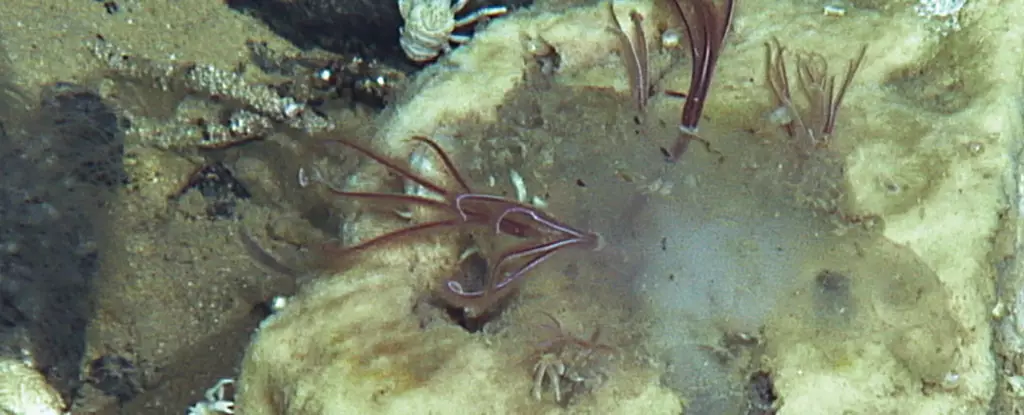The discovery of ancient bone-eating worms stretching back over 100 million years challenges our understanding of marine biodiversity and evolutionary endurance. These organisms, belonging to the genus Osedax, are not merely quirky detritivores but are pivotal to the deep-sea ecosystem’s recycling processes. Their ancient roots, traced through meticulous fossil analysis, expose a resilience that defies the commonly held notion of rapid evolutionary change. Instead, these worms appear to have maintained remarkably stable behaviors over vast geological timescales, suggesting that their niche—feeding on the skeletons of marine giants—has remained unchallenged and vital for eons.
This stability is fascinating but also troubling from an ecological perspective. It indicates that some evolutionary strategies are so finely tuned that they withstand the upheavals of mass extinctions and climate shifts. The fact that these worms are still thriving today implies an impressive adaptability within their niche, yet it also raises the question: have human activities begun to threaten their ancient, stable existence? The resilience of Osedax signals that nature’s ingenuity often results in entities designed for longevity, sometimes at the expense of ecological balance—highlighting the importance of protecting these microscopic marvels before they become relics of the past.
Unraveling the Mysteries Behind the Worms’ Persistence
The methods used to uncover this deep history demonstrate a technological breakthrough in paleontology. Non-destructive imaging like CT scans allowed scientists to peer into fossils without damaging delicate traces, revealing a trove of evidence about ancient behaviors. The identification of seven new ichnospecies—species defined by the traces they leave—deepens our understanding of how widespread and varied these bone-borers once were. It also hints at the idea that they might have once been more diverse than today’s relatively simplified genus Osedax.
What is particularly striking is the consistency of boring patterns across millions of years. The similarity of ancient burrows to those made by modern Osedax indicates a surprising evolutionary stasis, as if these worms have perfected their role and chosen stability over novelty. Their ability to adapt behaviors to feeding on different marine reptiles—mosasaurs, ichthyosaurs, and plesiosaurs—further attests to their resilience. Yet, this also raises questions about whether we are witnessing an ancient blueprint for survival or a vulnerable relic that could soon fade away if oceanic conditions change dramatically.
The Implications for our Climate Crisis and Marine Conservation
The discovery prompts a sobering reflection on humanity’s impact on marine ecosystems. While these worms have persisted through periods of paleo-catastrophes, their current environment faces unprecedented threats from pollution, warming seas, and overfishing. The ancient stability that once allowed them to thrive might soon be destabilized, not by natural upheavals but by human intervention. If these worms are so adept at surviving in the deep, why should we assume their resilience will extend into the future?
Furthermore, the study emphasizes the interconnectedness of life forms—how a tiny worm can reveal vast evolutionary timelines and ecological strategies. We often overlook such organisms, considering them insignificant, but their longevity underscores their importance. Protecting biodiversity means understanding these long-standing connections and acknowledging that even the smallest, most obscure creatures hold keys to our planet’s history and future. Their ancient lineage should serve as a sobering reminder that nature’s adaptability is not inexhaustible, and that human actions could threaten to wipe out these silent survivors before we even recognize their significance.
The Urgency of Further Research and Conservation Efforts
While current research sheds light on the ancient lineage of Osedax worms, it also exposes how much remains unknown. Many fossil traces have yet to be categorized, and the DNA of modern relatives remains sparse. The potential for genetic studies to unlock the secrets of their evolutionary adaptability is immense, but it depends on collecting more samples and data. This is a clarion call for increased scientific investment into deep-sea organisms, which often fly under the radar despite their long evolutionary history and ecological importance.
The future of these worms hinges on our willingness to look beyond surface-level concerns and recognize their role in the ocean’s delicate balance. Discovering ancient worms buried in fossils is more than a scientific curiosity; it’s a stark reminder of life’s persistence and vulnerability. If we continue to ignore the subtle signals of ecological disruption, we risk losing not just these ancient lineages but the invaluable ecological functions they serve—functions that have persisted through the most catastrophic episodes in Earth’s history and that, perhaps, can help us face today’s environmental crisis.



Leave a Reply